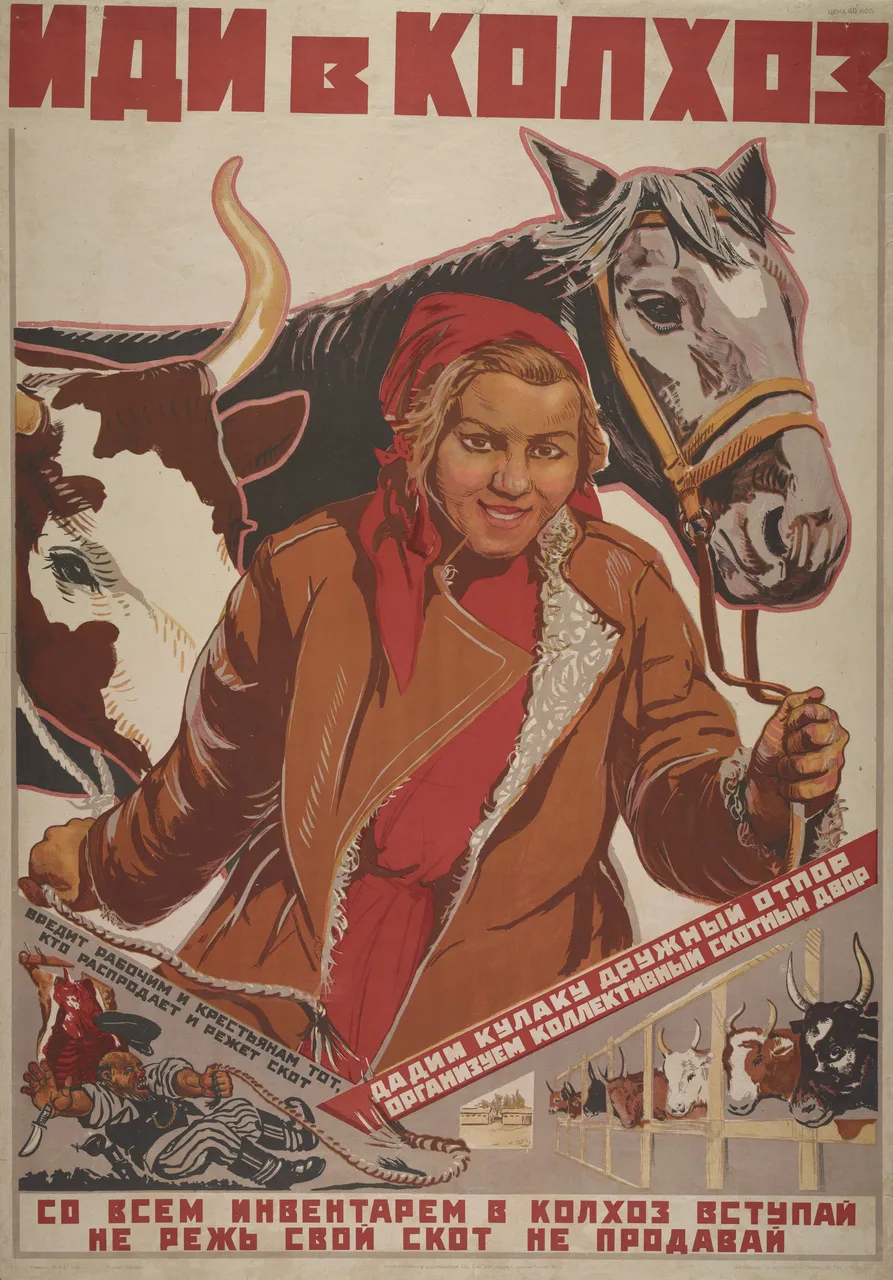
 # ####
# #### The party leadership saw the way out of the "grain difficulties" in the reorganization of agriculture, which envisaged the creation of state farms and the collectivization of the poor and middle peasant farms, while at the same time resolutely fighting the kulaks. According to the initiators of collectivization, the main problem of agriculture was its fragmentation: most farms were in small private ownership with a high share of manual labor, which did not allow meeting the growing demand of the urban population for food products, and industry - for agricultural raw materials.
Collectivization had to solve the problem of limited distribution of industrial crops in conditions of small-scale individual farming and to form the necessary raw material base for the processing industry. It was also planned to reduce the cost of agricultural products for the end user by eliminating the chain of intermediaries, and also through mechanization, to increase productivity and labor efficiency in agriculture, which should free up additional labor resources for industry.
The result of collectivization was the availability of a marketable mass of agricultural products in an amount sufficient to form food reserves and supply the rapidly growing urban population with food.
Unlike the previous major agrarian reforms in Russia, collectivization was not accompanied by any clearly articulated program and detailed instructions for its implementation, while attempts by local leaders to obtain clarification were discouraged by disciplinary means.
The signal for a radical change of policy towards the countryside was given in JV Stalin's speech in the Communist Academy in December 1929, although no specific instructions were given on the conduct of collectivization, other than the call to "liquidate the kulaks as a class."
Against the backdrop of the armed conflict on the CER and the global economic crisis, a transition to solid collectivization was taking place, which caused serious concern among the party leadership about the possibility of a new military intervention against the USSR.  source of a beautiful photo
source of a beautiful photo
Soviet poster : go to the collective farm🛠️
1 Comment
